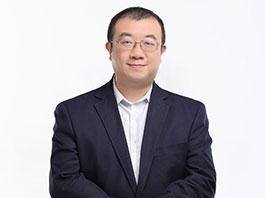Faculty
Dr. Xueyang Bao graduated from University of Science and Technology of China. He earned PhD degree in geology at University of Missouri-Columbia, USA. He joined SUSTech in 2019. His research interest is mainly in geophysical inversion and structural tomography. Dr, Bao has published articles in academic journals such as Geophysical Research Letters. Dr. Bao has been granted as a Pl or Co-Pl from the National Natural Science Foundation of China and other funding agencies.
EDUCATION
University of Missouri Columbia, MO
Ph.D., Geology 2011
University of Science and Technology of China Hefei, China
M.S., Geophysics 2005
University of Science and Technology of China Hefei, China
B.S., Geophysics 2001
PROFESSIONAL EXPERIENCE
SUSTech Shenzhen, Guangdong, China Assistant Professor, 2019-present
University of Rhode Island Narragansett, RI, USA Postdoctoral Fellow, 2014-2019
Brown University Providence, RI, USA Postdoctoral Associate, 2014
Boston University Boston, MA, USA Postdoctoral Associate, 2011-2013
Full-wave modelling, inversion, and imaging using High-performance Computation
Seismic amplitude attenuation measuring and tomography
Earthquake source location and moment inversion
Active tectonics such as the Tibetan Plateau
21. Liu, Bao*, and Guo (2022). Modeling of seismic attenuation infracture-filling gas hydrate-bearing sediments and its application to field observations in the Krishna-Godavari Offshore Basin, India. Marine And Petroleum Geology, 141.doi: 10.1016/j.marpetgeo.2022.105698
20. Dai, Shan, Meng, and Bao* (2022). Review of progress in seismic attenuation tomography. Reviews of Geophysics and Planetary Physics, 53(6):702-720 (in Chinese). doi:10.19975/j.dqyxx.2022-028.
19. Bao*, Guo*, and Shen* (2021), Compositional Variation in the Crust of Peninsular Ranges and Surrounding Regions, Southern California, Revealed by Full-Wave Seismic and Gravity Joint Inversion. Journal Of Geophysical Research-solid Earth,126(12)
18. Sun, Zhang, Ren, Bao, Xu, Sun, Yang, and Chen* (2021), 3d seismic-wave modeling with a topographic fluid–solid interface at the sea bottom by the curvilinear-grid finite-difference method. Bulletin Of The Seismological Society Of America, 111(5), 2753-277
17. Bao*, and Shen* (2020), Early-stage lithospheric foundering beneath the eastern Tibetan Plateau revealed by full-wave Pn tomography, Geophysical Research Letters, 47, doi: 10.1029/2019GL086469
16. Wang*, Shen*, Bao, and Flinders (2019), Locating shallow seismic sources with waves scattered by surface topography: Validation of the method at the Nevada Test Site, JGR-Solid Earth, 124, doi:10.1029/2018JB017291
15. Emry*, Shen, Nyblade, Flinders, and Bao (2019), Upper mantle Earth structure in Africa from full-wave ambient noise tomography, G3, 20, 120-147,doi:10.1029/2018GC007804
14. Bao*, and Shen (2018), Full-waveform sensitivity kernels of component-differential traveltimes and ZH amplitude ratios for velocity and density tomography, JGR-Solid Earth,
13. Dalton*, Bao, and Ma (2017), The thermal structure of cratonic lithosphere from global Rayleigh wave attenuation, EPSL, doi: 10.1016/j.epsl.2016.10.014
12. Bao*, and Shen (2016), Assessing waveform predictions of recent three-dimensional velocity models of the Tibetan Plateau, JGR-Solid Earth
11. Bao*, Dalton, Jin, Gaherty, and Shen (2016), Imaging Rayleigh wave attenuation with USArray, Geophysical Journal International
10. Bao*, Dalton, and Ritsema (2016), Effects of elastic focusing on global models of Rayleigh wave attenuation, Geophysical Journal International
9. Kaviani*, Sandvol, Bao, Rumpker, and Gok (2015), The structure of the crust in the Turkish-Iranian Plateau and Zagros using Lg Q and velocity, Geophysical Journal International, 200, 1254-1268, doi:10.1093/gji/ggu468
8. Bao*, Sandvol, Chen, Ni, Hearn, and Shen (2012), Azimuthal anisotropy of Lg attenuation in eastern Tibetan Plateau, JGR, 117, B10309, doi:10.1029/2012JB009255
7. Sahin*, Bao, Turkelli, Sandvol, Teoman, and Kahraman (2012), Lg wave attenuation in the Isparta Angle and Anatolian Plateau, Pageoph, 170, 337-351, doi:10.1007/s00024-012-0517-1
6. Bao*, Sandvol, Ni, Hearn, Ceylan, Liang, and Phillips (2012), High resolution seismic velocity and attenuation models of eastern Tibet and adjacent regions, Proceedings of the 33nd Monitoring Research Review of Ground-Based Nuclear Explosion Monitoring Technologies, Tucson, AR
5. Bao*, Sandvol, Ni, Hearn, Chen, and Shen (2011), High resolution regional seismic attenuation tomography in eastern Tibetan Plateau and adjacent areas, GRL, 38, L16304, doi.10.1029/2011GL048012
4. Bao*, Sandvol, Zor, Sahin, Mohamad, Gok, Mellors, Godoladze, Yetirmishli, and Turkelli (2011), Pg attenuation tomography within the northern Middle East, BSSA, 101-4,1496-1506, doi: 10.1785/0120100316
3. Shi, Wen, Bao, Li, and Huang (2006), Application of rock creep experiment in calculating the viscoelastic parameters of earth medium, Science in China (D)-Earth Science, 49, 492-498, doi:10.1007/s11430-006-0492-4.
2. Bao, Shi, Wen, and Li (2005), Experiment study and interpretation on relation between modulus of rocks and strain amplitude, Earthquake Research in China, 21(4)
1. Bao, and Shi (2004), Experiment study on nonlinear elasticity of rocks and P-M Model, Chinese Journal of Rock Mechanics and Engineering, 23, 3397



